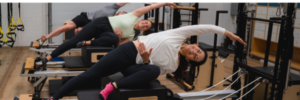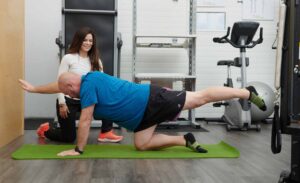Children slowly transition into wearing shoes as they learn to walk and during these early stages of development shoes are mainly used for protection and tend to be soft and flexible. By the time children reach school-age, they are often wearing shoes for most of their day, switching between an indoor pair and an outdoor pair. To help parents find a proper fit for their child, I recommend following these tips on style, size, and hand-me downs.
STYLE
In most cases school-age children spend most of their time wearing indoor shoes but will be very active in their outdoor shoes. It is important to choose shoes that are easily adjustable, fit snug at the heel, and are properly fit for length. Slip-on shoes may be ideal due to ease of putting them on however they could require the toes to grip harder to keep the shoe on. Lace-up or Velcro style shoes allow for an adjustable fit across the top of the foot and will securely hold the heel in the back of the shoe.
SIZE
There is no guarantee that buying 1 size bigger will be the proper fit, therefore it is always best to take your child with you when buying them shoes. If the shoes are too small, it does not allow for normal foot movement while walking, and if the shoes are too big then the foot is not in the flex point of the shoe. A proper fit is obtained when there is approximately 1 thumb width or 10-12mm between the end of the longest toe and the end of the shoe with a measurement done while standing. Although it may be tempting to buy shoes that are longer than necessary to allow for growth, it is best not to buy shoes more than 1 size larger than your child’s measured size.
HAND ME DOWNS
It is quite common for parents to give younger children an old pair of shoes from their older sibling, however this can be problematic. The wear pattern in a pair of shoes is like the sole of the shoe having a memory and it is possible the younger child may not match it. This could be detrimental to them.
It is generally best practice to take your child with you when buying them shoes, look for shoes that have an adjustable fit, and check that there is at least 1 thumb width (10-12mm) between the end of their longest toe and the end of the shoe. At Orthoquest we currently do not carry children’s sized shoes, however we would be happy to check the fit of your child’s shoes, make recommendations, or answer any questions you may have.
Questions? Book in to see a Canadian Certified Pedorthist today!
Written by: Stephanie Couch BHK, C. Ped (C)
REFERENCES
L.W. Barnes 2011, Lower Extremity Review, Accessed 25 August 2019<https://lermagazine.com/cover_story/thinking-small-making-strides-in-childrens-footwear>
Frontiers. “Footwear habits influence child and adolescent motor skill development: Researchers show that regular physical activity without shoes may improve children’s and adolescents’ balancing and jumping skills.” ScienceDaily. ScienceDaily, 11 July 2018. <www.sciencedaily.com/releases/2018/07/180711093150.htm>



